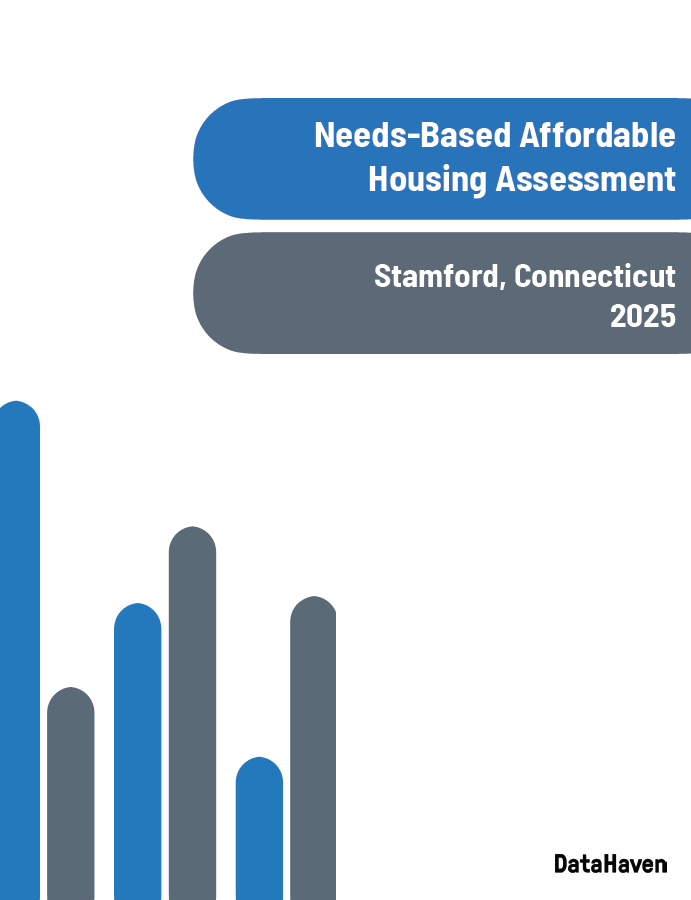Authored By
Kelly Davila, DataHaven
Date
October 10, 2025
Partners
Vita Health and Wellness Partnership, Charter Oak Communities, City of Stamford
Using a combination of public data sources and information collected from ten local organizations serving housing-insecure residents, the report offers a detailed view of Stamford's housing affordability challenges.
One goal of this report was to estimate the number of low-income households in Stamford, Connecticut, and the number of housing units affordable to them. The analysis found that Stamford has about 13,800 affordable rental units, about 700 fewer than the number of low-income households. However, the shortage is most severe among the city’s 7,500 Extremely Low Income households, who face a deficit of roughly 4,100 affordable units.
Data from recent waves of the DataHaven Community Wellbeing Survey illustrate the challenges faced by renters in Stamford, especially those with limited income. Many low-income households rely on community organizations to meet essential needs like food, transportation, and healthcare, underscoring the link between housing instability and broader economic insecurity.
To better understand lived experiences, the project also gathered input directly from residents served by local organizations. Nearly half of these residents reported difficulty paying for housing, and more than one in five feared eviction or foreclosure in the near future. These findings emphasize the need for affordable housing and targeted supports for families with children, seniors, immigrants, individuals with disabilities, and other groups.
The report concludes that expanding affordable housing supply, preventing formal and informal evictions, and improving access to supportive services are essential steps toward improving access to housing in Stamford.
This report was created based on a partnership between DataHaven, Vita Health and Wellness, Charter Oak Communities, and the City of Stamford, and also relied on information collected with 10 Stamford-area organizations that serve the housing insecure population.





